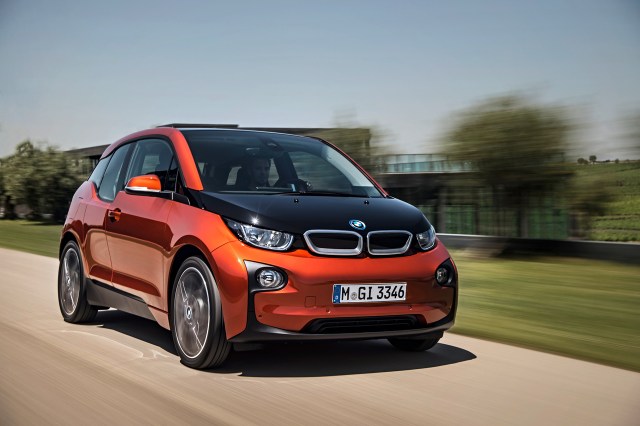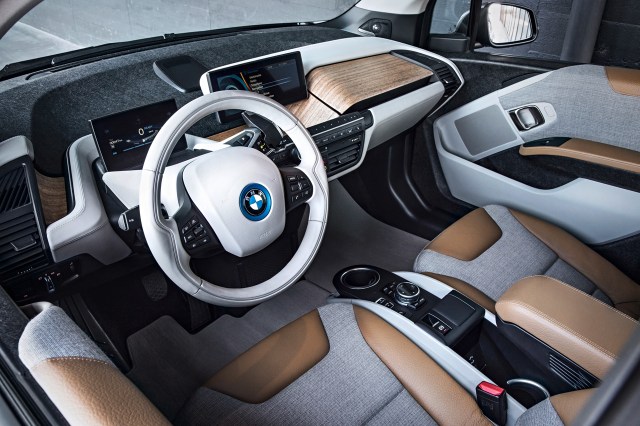
Watch out, Tesla. BMW has officially entered the EV market. With the BMW i3, officially announced today, the Bavarian auto maker has a vehicle and, with that, a platform, that could shake up the electric vehicle market. Meet the BMW i3, the ultimate electric driving machine.
The BMW i3 is the company’s first production electric vehicle under the “i” sub-brand. Priced at $41,350 in the U.S. (£25,680 in the UK) and headed to the U.S. market in the second quarter of 2014, the i3 isn’t a car for the masses. Even though it’s one of the least expensive EVs available, the sticker is still out of reach for many. Worse yet, its EV range is less than that of competitors, including the Nissan Leaf. But it’s a BMW. And it looks fantastic.
BMW no doubt expects the i3 to be a low-volume production car. It is, in a sense, for early adopters. The 22-kilowatt, 450-pound lithium-ion power train is good for just 80-100 miles and provides 170 horsepower and 184 pound-feet of torque. That’s good for a pokey 7-second 0-60 time. For those buyers with a bit of range anxiety, the i3 can be equipped with a a 34-hp, 650cc two-cylinder generator, turning the car into a Chevy Volt-like, extended-range electric vehicle.
But for BMW, the i3 isn’t about building and selling the best electric vehicle right now — rather, it’s about building a platform for the future. This is standard operating procedure in the automotive world.
Tesla started with the Roadster, a vehicle that borrowed a good chunk of its framework from Lotus. From there, once many of the bugs were worked out of the novel electric power train, Tesla released the Model S sedan, a car that cost about three-quarters what the Roadster did. Chevy is doing the same thing with the Volt.
The Chevy Volt didn’t have to be a breakthrough hit to be a success. The Volt is built on the Voltec platform that’s also going to be used in the Cadillac ELR coupe and other upcoming GM extended range electric vehicles.

The BMW i3 is a sort of test bed. The production car features a stable of technology and creature comforts not found in the rest of the auto maker’s line-up. BMW calls the architecture LifeDrive, consisting of the Life Module and Drive Module. The Life Module is void of pillars and is the first mass-produced monocoque made of carbon fiber reinforced plastic. The material is 30 percent lighter than aluminum and is tougher than steel, contributing to the i3’s relatively light weight of 2,700 pounds. Expect to see this sort of material and design in upcoming BMWs.
The Drive Module consists of the drivetrain, battery pack and everything that propels the i3.
The i3 and its big brother the i8 have never been a secret. BMW has long paraded concepts and near-production examples around, sort of proclaiming to the world that BMW will, at least eventually, participate in electric vehicles.
The EV market is still in its infancy and it still experiences shakeups as early upstarts shut down. Tesla seemingly owns a large chunk of the public’s mindshare, Nissan can’t build enough Leafs to meet demand, and GM is rolling forward with new vehicles built on top of the Volt’s platform. Better yet, startups are popping up, eager to join the EV race. But with the BMW i3, the rest of the market should take notice — there’s suddenly a new player on the field that knows a thing or two about building compelling cars.